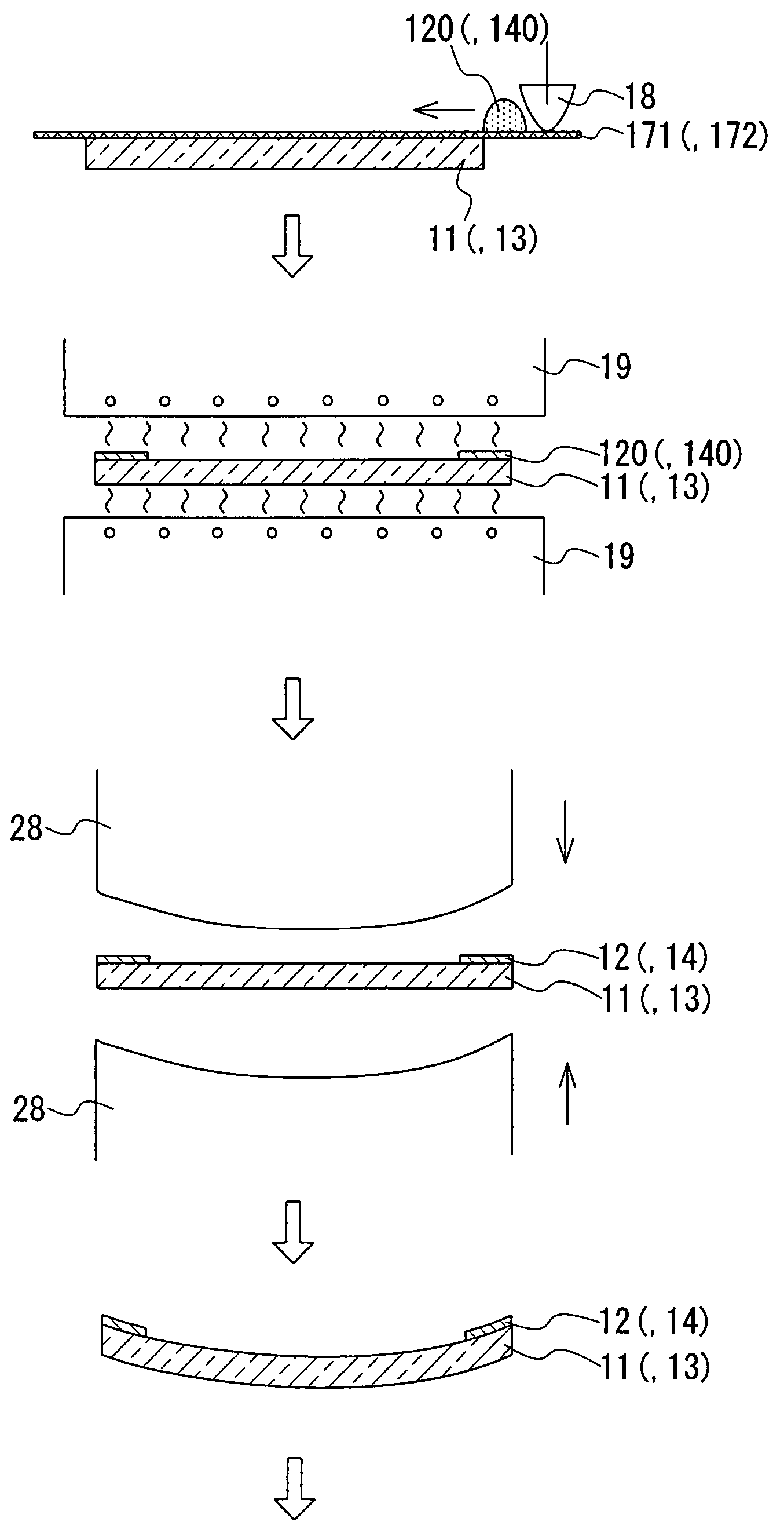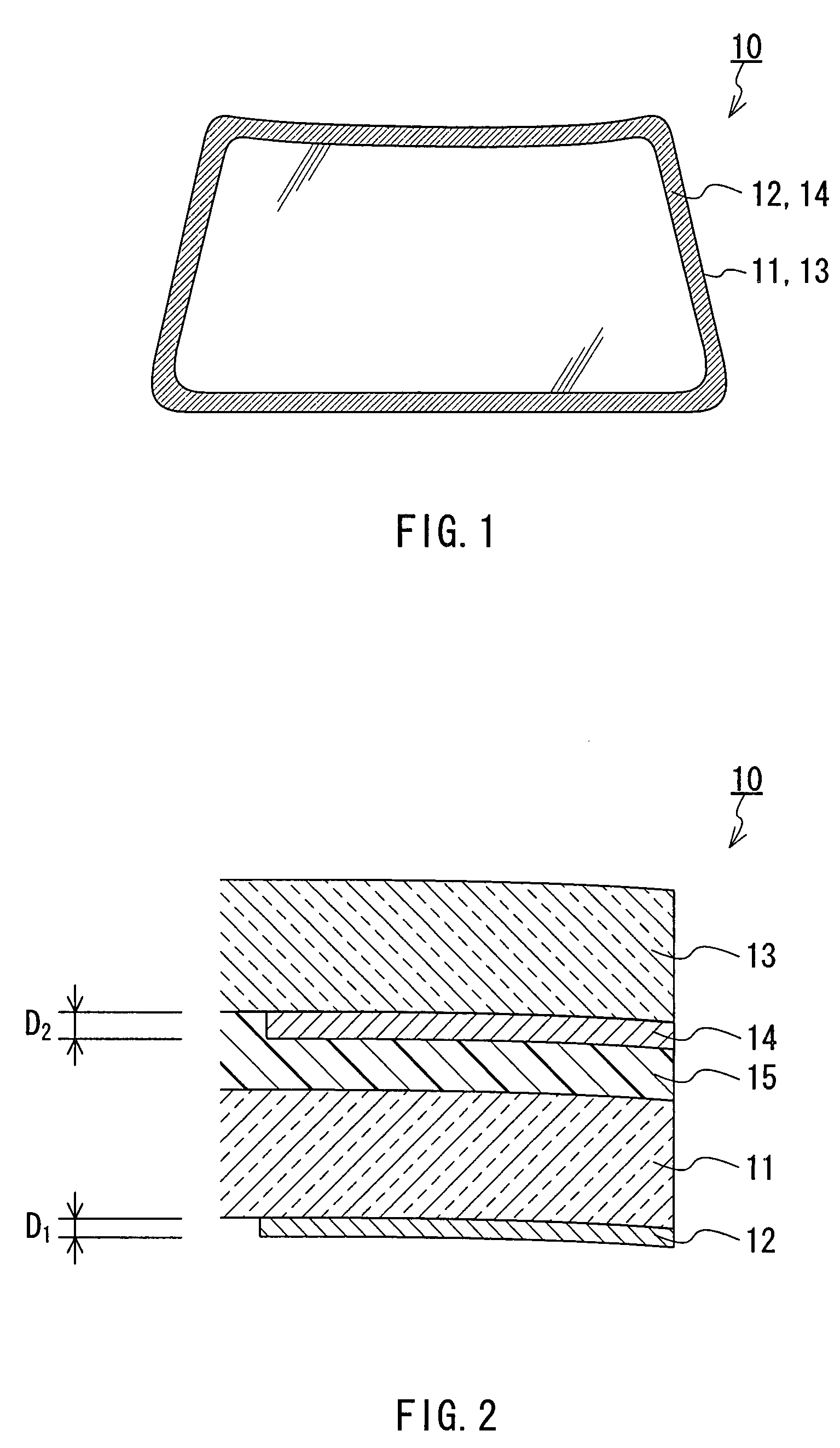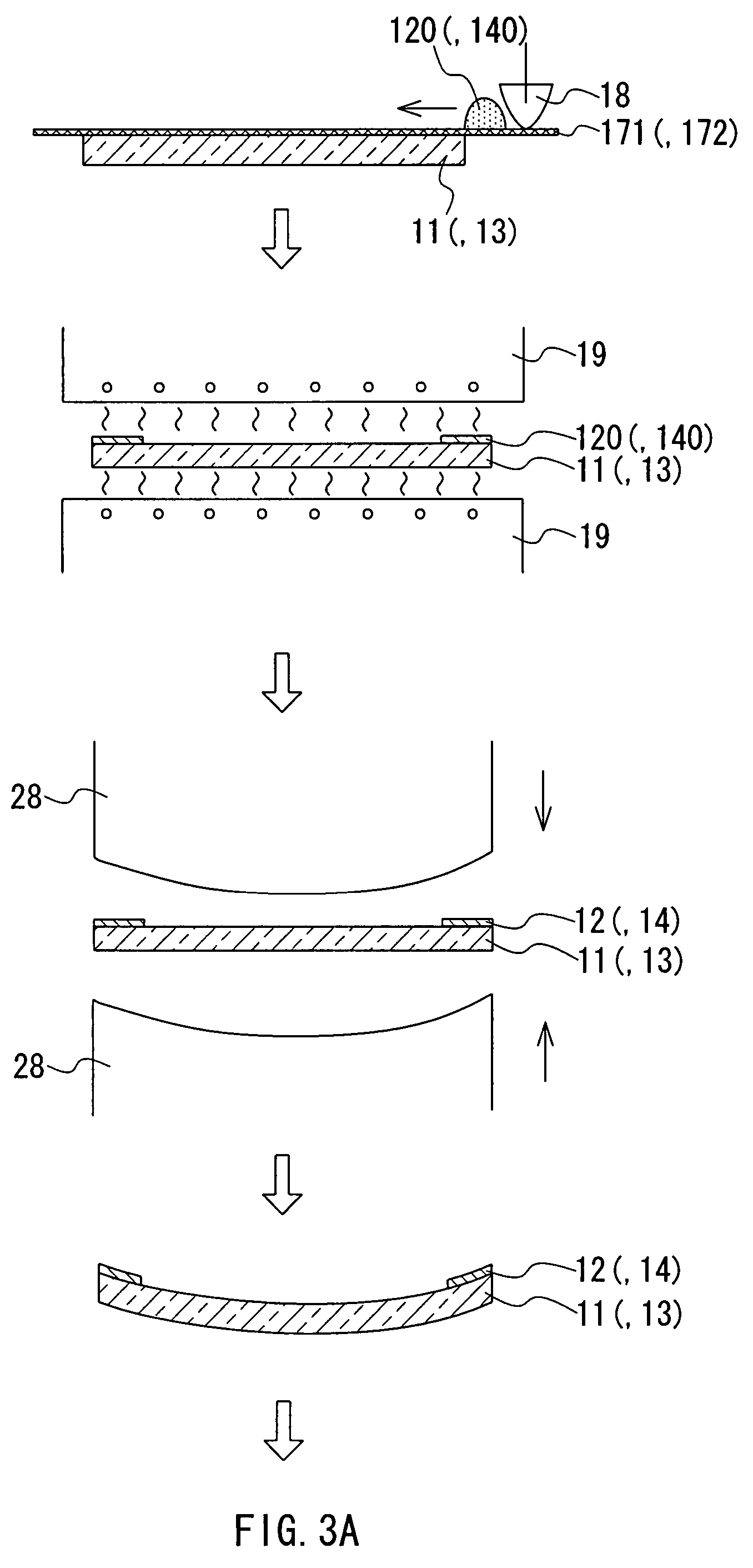Method of manufacturing laminated glass for vehicle and laminated glass for vehicle
a technology of laminated glass and vehicle, which is applied in the direction of glass reforming apparatus, packaging, printing, etc., can solve the problem of not necessarily being the case, and achieve the effect of reducing preventing the difference in bend degree, and reducing the gap between edges
- Summary
- Abstract
- Description
- Claims
- Application Information
AI Technical Summary
Benefits of technology
Problems solved by technology
Method used
Image
Examples
examples
[0071]A clear glass sheet with a thickness of 2.1 mm (FL, manufactured by Nippon Sheet Glass, Co., Ltd.) to be used as a first glass sheet and a heat absorbing glass sheet with a thickness of 2.1 mm (MFL, manufactured by Nippon Sheet Glass, Co., Ltd.) to be used as a second glass sheet each were produced by a known float glass process. The compositions of the respective glass sheets were adjusted so that the second glass sheet (outer sheet) had a lower solar transmittance than that of the first glass sheet (inner sheet).
[0072]With respect to these glass sheets, the visible-light transmittance (in a wavelength region of 380 to 780 nm), solar transmittance (in a wavelength region of 300 to 2500 nm), and infrared transmittance (at a wavelength of 1550 nm) were measured by using a spectrophotometer according to Japanese Industrial Standards (JIS) R3212:1998 and R3106:1998.
[0073]The clear glass sheet had a visible-light transmittance of 90.7%, a solar transmittance of 88.4%, and an infra...
PUM
| Property | Measurement | Unit |
|---|---|---|
| wt % | aaaaa | aaaaa |
| wt % | aaaaa | aaaaa |
| wt % | aaaaa | aaaaa |
Abstract
Description
Claims
Application Information
 Login to View More
Login to View More - R&D
- Intellectual Property
- Life Sciences
- Materials
- Tech Scout
- Unparalleled Data Quality
- Higher Quality Content
- 60% Fewer Hallucinations
Browse by: Latest US Patents, China's latest patents, Technical Efficacy Thesaurus, Application Domain, Technology Topic, Popular Technical Reports.
© 2025 PatSnap. All rights reserved.Legal|Privacy policy|Modern Slavery Act Transparency Statement|Sitemap|About US| Contact US: help@patsnap.com



